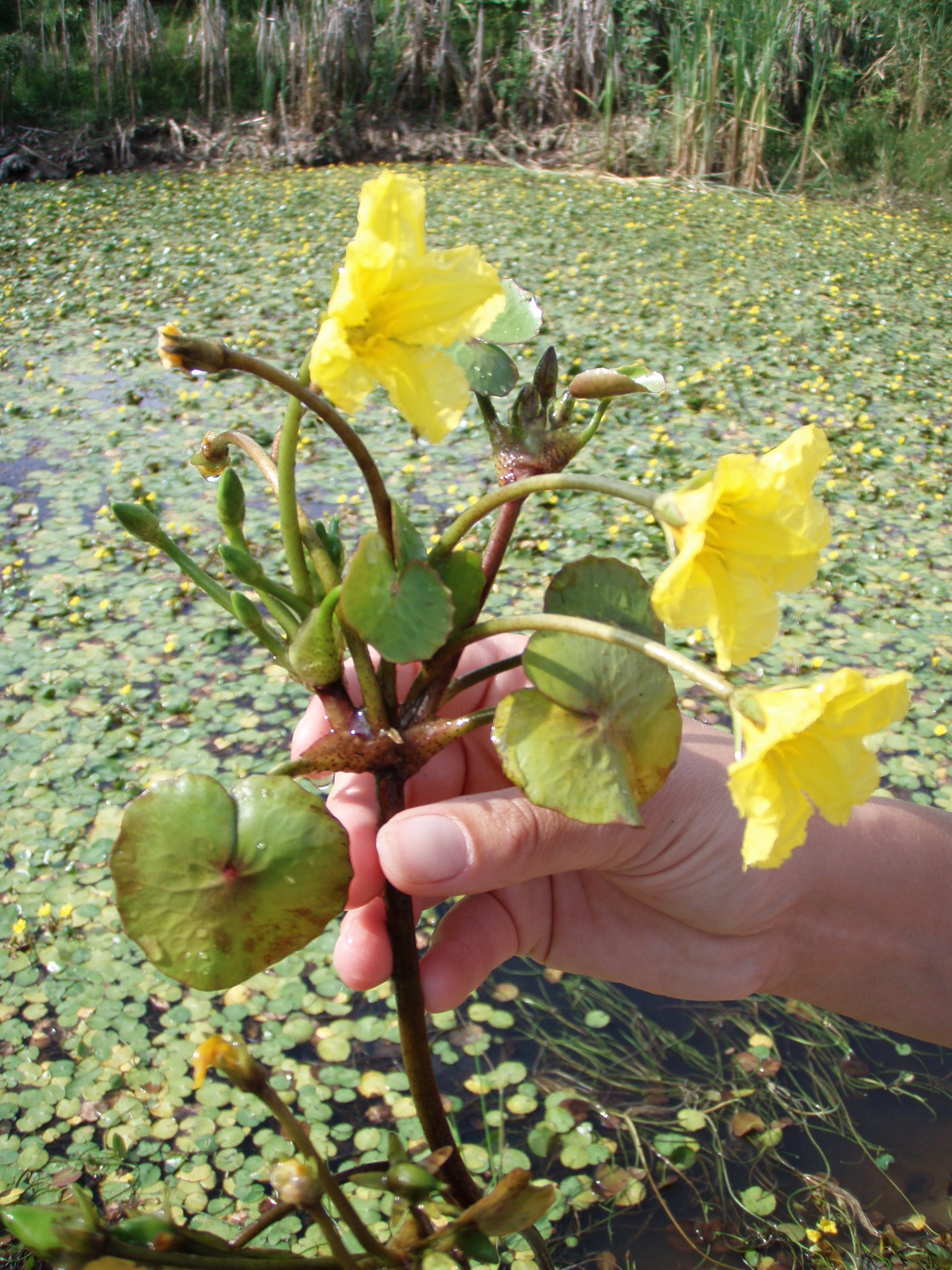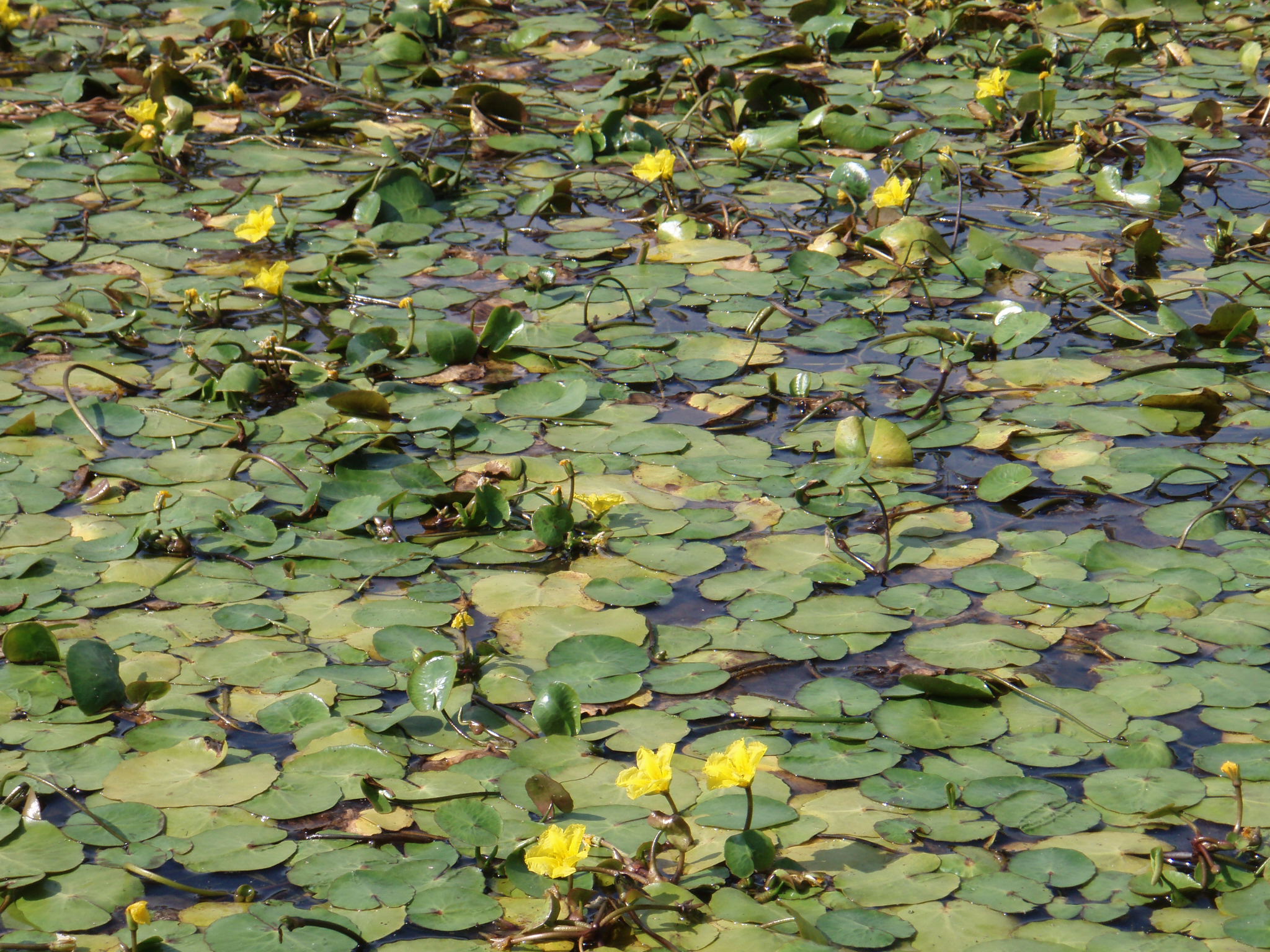Yellow floating heart identification and control
Information about the noxious weed yellow floating heart. Yellow floating heart is also known by its scientific name, Nymphoides peltata.
About this weed
Yellow floating heart is a regulated Class B noxious weed in King County. This means control is required in King County under the state noxious weed law. Yellow floating heart is also on the Washington quarantine list and it is illegal to buy, sell, or offer it for sale in the state.
Yellow floating heart is known as Nymphoides peltata or water fringe and it is in the bogbean family.

Why it's a problem
Yellow floating heart is a floating-leaf aquatic plant. It can form dense mats that cover the surface of ponds, lakes, and slow-moving waterbodies. These impenetrable mats prevent native plant growth and recreation and damage wildlife habitat.
Plant description
Yellow floating heart is an aquatic perennial (2+ year life cycle) found in still and slow-moving water bodies. It can grow in water from ~1.5 to 13 feet deep.
Heart-shaped leaves are slightly wavy and scalloped, they float on the water's surface. Leaves are up to 4 inches across. Fringed yellow flowers with 5 sepals (leaflike flower part that encloses/supports the petals), petals, and stamens (stalks in flower center) grow on stalks just above the water's surface. Flowers are visible from June to September.
This plant roots in underwater sediment and reproduces vegetatively via rhizomes (root system that spreads outwards and can grow new stems), stolons (horizontal plant stem that can take root and form new plants), and plant fragments, as well as by seed.
Yellow floating heart is native to Europe and Asia.





Be aware of look-alike plants
Yellow floating heart looks most similar to the more common noxious weed fragrant water lily. Unlike yellow floating heart (which has heart-shaped leaves with wavy margins/edges), fragrant water lily has round leaves with smooth margins/edges that can grow larger. Also, if present, the flowers of the two species are very different.
The native plant spatterdock (Nuphar polysepala) has much larger leaves, stiff stems, and cup-like flowers without fringed petals. Water shield (Brasenia schreberi) has small oval floating leaves often with a jelly-like covering on the undersides, and small purple flowers. Other species of Nymphoides (N. aquatica and N. cordatum), which are be sold as ornamental plants may also look similar.
What to do if you find it
Property owners are required to control yellow floating heart in areas they that they manage. Please notify us if you see yellow floating heart growing in King County. Our program staff can provide the property owner or appropriate public agency with site-specific advice on how best to remove it. We map all known locations of yellow floating heart to help us, and others locate new infestations in time to control them. Also, because yellow floating heart is not established in King County, we have an opportunity to stop it from spreading if we act quickly.
Control methods
We recommend using a combination of methods to control noxious weeds. In areas with few weeds, it is important to act quickly before they become harder to control. Make a long-term plan as it often takes several years to get rid of most weeds. Start in the least infested areas first and then move into more heavily infested areas.
Yellow floating heart plants are very difficult to control. Incomplete control methods such as cutting can lead to further spread of viable plant fragments. These plant fragments can re-grow and increase the infestation. The entire plants must be removed for control to be effective.
Aquatic weeds grow in sensitive environments and their control, either by manual, mechanical, or chemical/herbicide methods, is carefully regulated on a state and local level. Before beginning any aquatic weed control work make sure you are following all applicable regulations.
Prevention
Yellow floating heart (Nymphoides peltata) may be sold as a water plant so be sure to check the scientific name of all plants before purchasing them. Be especially when ordering online where companies may not be aware of Washington state laws. If you do spot this plant growing in a new place, be sure to act quickly to remove it entirely to keep it from spreading.
This plant is often distributed through movement of watercrafts and water related equipment. Make sure you inspect your watercraft at the boat launch before entry and after exit to avoid spreading any invasive or nuisance aquatic plants or animals. See King County’s boating regulations fact sheet [LINK: Boating regulations fact sheet - King County] for more information.
Manual control
Be sure to remove the entire plant and not leave any stem or root fragments behind. Dispose of plants in the garbage to avoid spreading the plant further.
Chemical control
Stay safe when using herbicide:
- Always read the label before use.
- Wear a long-sleeved shirt, long pants, shoes, and eye protection.
- Follow state and local regulations.
Controlling this species is very challenging once it is established in a waterway. In addition, permits will be needed since this plant grows in water. See Washington Department of Ecology Aquatic Pesticide Permits for details.
For more information or a site-specific control recommendation in King County, contact the noxious weed program. For information in other counties in Washington state, contact your local weed board or your local cooperative extension office.
Herbicides that are registered for aquatic use in Washington, like aquatic approved glyphosate, have shown some effectiveness. Many years of application are needed for complete control.
Disposal instructions
Plant material from yellow floating heart should be disposed of in the garbage.
Washington State Noxious Weed Control Board pamphlet on noxious weed disposal
Are your weeds piling up? – Noxious Weeds Blog

 Translate
Translate